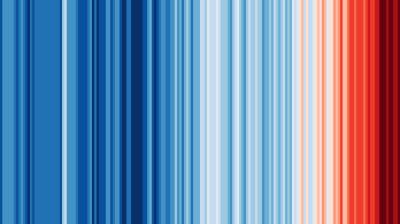New Directions in Climate Modelling: A World Climate Research Programme Perspective
The World Climate Research Programme (WCRP) has introduced new Core Projects and Lighthouse Activities that are promising to enhance climate services and the availability of climate information around the world.
- Author(s):
- Gregory M.Flato (1), John Dunne (2), Baylor Fox-Kemper (3), Andrew Gettelman (4), Helene Hewitt (5), Tatiana Ilyina (6), Cath Senior (5), Michael Sparrow (7), Detlef Stammer (6), Susann Tegtmeier (8) and Pier Luigi Vidale (9)

The World Climate Research Programme* (WCRP) has introduced new Core Projects and Lighthouse Activities that are promising to enhance climate services and the availability of climate information around the world. WCRP will foster and coordinate global and regional climate modelling activities – including model evaluation, new climate scenario runs, and high-resolution global and regional modelling capabilities – through its new Core Projects and Lighthouse Activities.
The new activities build on longstanding WCRP initiatives such as the Coupled Model Intercomparison Project (CMIP), which is winding up its 6th phase. CMIP involves a standardized set of global climate model experiments historical – simulations, specialized sensitivity studies, and future projections – that are undertaken by climate modelling centres around the world. The standardized experimental design and specified forcing allow some characterization of model uncertainty, separate from uncertainty about future emission pathways. In addition, the modelling centres use a common data structure and format and disseminate data on a globally integrated platform (the Earth System Grid Federation, ESGF). This ensures that researchers everywhere can access the model output and undertake an ever-growing range of analyses to make increasingly comprehensive comparisons of model results to observations to evaluate model performance using a range of community tools. (For more, see the next two article in this issue of the Bulletin).
CMIP output has been a crucial input to national and international climate assessments. For example, the Intergovernmental Panel on Climate Change’s (IPCC) Interactive Atlas draws heavily upon CMIP model results to provide quantitative projections of future climate under different greenhouse gas emission scenarios. The fact that multiple models produce such projections, using the same forcing, allows direct illustration and quantification of the uncertainty associated with model representation of various processes and uncertainty associated with unknowable future human activities and the associated emissions. An example of this is shown in Figure 1 in terms of global mean surface temperature projections. Results of this kind have been essential to international climate policy discussions in that they make a direct link between alternate future emission pathways and future warming, thereby linking necessary mitigation action to temperature targets like those laid out in the Paris Agreement of the United Nations Framework Convention on Climate Change (UNFCCC). The IPCC Interactive Atlas is used by many countries, especially those that do not have their own national climate assessment process.
Closely connected to CMIP, the WCRP also organizes the Coordinated Regional Downscaling Experiment (CORDEX), involving regional climate models, operating on continental size domains at much higher resolution than the CMIP global models. The CORDEX results provide higher resolution “windows” on future climate in different regions and are particularly valuable to project climate change impacts for adaptation research communities, such as the authors of the IPCC’s Working Group II. The higher resolution of CORDEX allows for a better understanding of extreme weather within the focus windows.
The CMIP and CORDEX projects together provide essential input to climate adaptation and mitigation planning and form the basis for much of the quantitative climate service information that supports practitioners and decision-makers around the world.

New projects and activities
Since its launch in 1980, the WCRP has evolved to remain at the leading edge of climate science and to ensure that its structure and programmes are responsive to the needs of both the scientific and user communities. Most recently, the WCRP has reorganized somewhat to better manage its various climate modelling and observational initiatives. Two new core projects were launched in 2020. The first, Earth System Modelling and Observations (ESMO), aims to advance predictions and projections of the Earth system on timescales from weeks to centuries. It will do so by furthering model observation integrated frameworks, improving monitoring, understanding and attribution of Earth system changes and impacts with robust uncertainty quantification, and by advancing and harnessing emerging technologies in modelling and observations. Some existing WCRP Working Groups, like the Working Group on Coupled Modelling and its CMIP Panel, now fall under ESMO.
The second, Regional Information for Society (RIfS), aims to increase the links between climate research and the information needs of society. Using an enabling co-creation/co-production framework, RIfS promises to build on core research principles to provide actionable information that integrates the best most relevant available science for each the decision-making context. Thus, RIfS will adaptively respond over time to the changing needs of society. RIfS includes the CORDEX initiative. These new core projects join the excellent company of the other core projects: CliC, CLIVAR, GEWEX, and SPARC.
In addition to these new core projects, the WCRP has also established several Lighthouse Activities to focus efforts on particular high-priority topics. One, Digital Earths, is pushing development of high-resolution (horizontal scale < 10 km Earth system modelling and the exploitation of billions of observations with digital technologies such as HighPerformance Computing (HPC), big data and Artificial Intelligence (AI) methodologies. High-resolution regional and global climate modelling is technically possible as well as necessary to simulate extreme weather under climate change. High-resolution modelling is also essential to connect with models of human systems – water systems, energy grids, urban areas and more – to translate climate impacts into impacts on human society. While km-scale models will not address all the uncertainties related to predicting and projecting future climate, Digital Earths will drive forward innovations that ensure that the international climate research community is able to take full advantage of new and exciting technologies.
The overall objective of the Digital Earths activity is to carry out research that supports the establishment of integrated interactive digital information systems spanning the past, present and future of our planet. This includes linking to observations, and critically linking to human system models. Recognizing that Digital Earths is relevant to WMO activities outside of WCRP, links are being explored with the World Weather Research Programme and the Global Atmosphere Watch.
Another new Lighthouse Activity, Explaining and Predicting Earth System Change (EPESC), will address the formulation of robust policies for mitigation of, and adaptation to, climate change. This requires a quantitative understanding of how and why specific changes are unfolding in the Earth system, and what might happen in the future. A quantitative explanation of observed changes – through robust process-based detection and attribution – is also fundamental to confidence specification in climate assessments, predictions and projections. However, the capacity to deliver these capabilities is very immature. The overarching objective of this Lighthouse Activity is to design, and take major steps toward delivery of, an integrated capability for quantitative observation, explanation, early warning and prediction of Earth system changes on global and regional scales, with a focus on multi-annual to decadal timescales.
This includes three main themes:
- Observing and modelling Earth system change
- Integrated attribution, prediction and projection (including early warning and the potential for abrupt change)
- Assessment of current and future hazards.
Status and plans
The new WCRP Core Projects and Lighthouse Activities are now up and running. The WCRP Open Science Conference, a once-in-a-decade event which was held in Kigali, Rwanda, from 23–27 October, held many sessions directly connected to the new climate modelling activities, providing an opportunity for scientists in developed and developing countries to discuss priorities. With CMIP 6th phase soon to end, planning is now well underway for phase 7 with new activities in the realm of high-resolution climate modelling. A later article in this Bulletin, Climate Services Based on Climate Predictions and Projections, will discuss how RIfS is augmenting WMO efforts to enhance climate services and the availability of climate information around the world. WCRP will continue to ensure that climate model results are available to be assessed, that new climate scenarios are appropriately defined and documented, and that the WCRP community is fully engaged in the scoping and writing of IPCC Assessment Reports. More broadly, outcomes from the WCRP projects and activities will continue to contribute to the scientific underpinnings of national and international climate policy and mitigation efforts like those associated with the Paris Agreement. For more details on the full range of WCRP activities, please consult the WCRP website at https://www. wcrp-climate.org/.
* WCRP, jointly sponsored by WMO, the International Science Council (formerly ICSU) and the International Oceanography Commission of (UNESCO), coordinates and facilitate international climate research to develop, share and apply the climate knowledge that contributes to societal well-being. The Programme has spearheaded many influential multinational climate research activities and developed institutional structures that continue to serve both the climate science and service communities.
Footnotes
1 Environment and Climate Change Canada (ECCC)
2 National Oceanic and Atmospheric Administration (NOAA) Oceanic and Atmospheric Research (OAR) Division, Geophysical Fluid Dynamics Laboratory (GFLD), United States of America (USA)
3 Department of Earth, Environmental & Planetary Sciences (DEEPS), Brown University
4 Pacific Northwest National Laboratory, USA
5 Met Office Hadley Centre, Met Office, United Kingdom (UK)
6 Centre for Earth System Research and Sustainability (CEN), Hamburg University; Helmholtz-Zentrum Hereon; and Max Planck Institute for Meteorology
7 World Climate Research Programme (WCRP), co-sponsored by WMO, Intergovernmental Oceanographic Commission of UNESCO (IOC-UNESCO) and The International Science Council (ISC)
8 Institute of Space and Atmospheric Studies, University of Saskatchewan
9 National Centre for Atmospheric Science (NCAS), Department of Meteorology, University of Reading
References:
IPCC, 2021: Summary for Policymakers. In: Climate Change 2021: The Physical Science Basis. Contribution of Working Group I to the Sixth Assessment Report of the Intergovernmental Panel on Climate Change [Masson-Delmotte, V., P. Zhai, A. Pirani, S.L. Connors, C. Péan, S. Berger, N. Caud, Y. Chen, L. Goldfarb, M.I. Gomis, M. Huang, K. Leitzell, E. Lonnoy, J.B.R. Matthews, T.K. Maycock, T. Waterfield, O. Yelekçi, R. Yu, and B. Zhou (eds.)].











